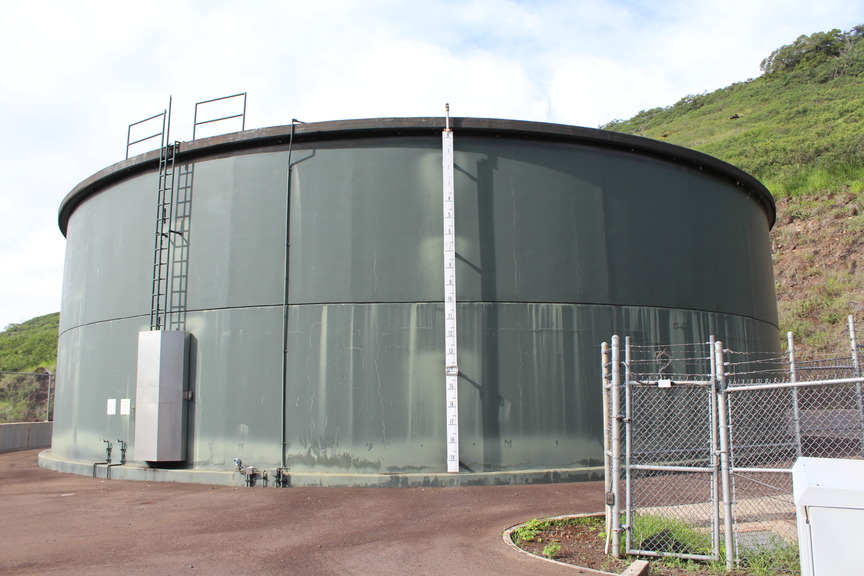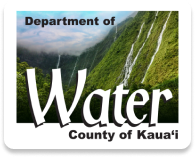Water Quality

Providing safe drinking water is essential to our communities and it is important that our customers are informed that your water is tested on a continuous schedule through our certified laboratories and the State Department of Health.
We welcome your interest in the Department of Water’s water systems. Please call (808) 245-5406 or attend a monthly, public board meeting.
Water Quality Reports
Each year, source water assessments are completed by the State Department of Health and the University of Hawaiʻi. Based on our test results, we are pleased to report that Kauaʻi’s potable water supply meets or exceeds state and federal standards for clean, safe drinking water. For more information, select your area below to download a detailed report in PDF format.
Is My Drinking Water Safe?
Yes. The Department of Water regularly conducts microbiological analysis and has contracted for extensive chemical testing in order to comply with Environmental Protection Agency (EPA) and Hawaiʻi State standards. The standards are very strict in order to ensure safe drinking water.
Potential Contaminants
Contaminants that may be present in source water before we treat it are:
- Microbial contaminants: Viruses and bacteria from sewage treatment plants, septic systems, agricultural livestock operations and wildlife.
- Inorganic contaminants: Salts and metals which can be naturally occurring or from other sources, such as urban storm water runoff, industrial or domestic wastewater discharges, oil and gas production, mining or farming.
- Pesticides and herbicides: Variety of sources such as agriculture, urban storm water runoff and residential uses.
- Radioactive contaminants: Naturally occurring.
- Organic chemical contaminants: Synthetic and volatile organic chemicals, by-products of industrial processes and petroleum production, also from gas stations, urban storm water runoff, and septic systems.
Required Testing
We are required to test your tap water for:
- Different types of chemical contaminants: Regulated contaminants, each with a maximum contaminant level (MCL) and a maximum contaminant level goal (MCLG); and unregulated contaminants, which don’t have maximum contaminant levels.
- Coliform bacteria.
- Heavy metals (lead and copper).
Questions?
Where Your Water Comes From
The source of Kauaiʻs drinking water is supplied by groundwater wells and a surface water treatment plant, delivered through a network of nine individual water systems across the island that transmits water across 400+ miles of pipeline.
Frequently Asked Questions (FAQs)
Sometimes if water in your house is not used, the microbes in the pipes can grow and cause odors and funny taste. Flushing the water can resolve this problem. Water should be flushed in the morning or when not used for an extended period of time.
Air trapped in the water lines causes this problem. Let the water sit in a glass and if the water becomes clear from the bottom up, air is the cause and the water is safe to drink. This is normal and if it occurs, you may flush water out from an outside hose spigot until water is clear.
Chlorine is added to control microbe levels in the water distribution system to keep the water safe. The chlorine level ranges between 0.1 to 0.5 ppm and these small amounts of chlorine do not pose a health hazard. If you want to remove chlorine, either let it sit for a while or filter it through an activated carbon filter.
All sources of drinking water, including both tap water and bottled water, include rivers, lakes, streams, ponds, reservoirs, springs and wells. As water travels over the surface of the land or through the ground, it dissolves naturally occurring minerals and, in some cases, radioactive material, and can pick up substances resulting from the presence of animals or from human activity.Therefore, drinking water, including bottled water may reasonably be expected to contain at least small amounts of some contaminants. The presence of contaminants does not necessarily indicate that the water poses a health risk.
Some people may be more vulnerable to contaminants in drinking water than the general population. Immune-compromised persons such as persons with cancer undergoing chemotherapy, persons who have undergone organ transplants, people with HIV/AIDS or other immune system disorders, some elderly and infants can be particularly at risk from infections. These people should seek advice about drinking water from their healthcare providers.
Guidelines on appropriate means to lessen the risk of infection by Cryptosporidium and other microbial contaminants are available from the EPA’s safe drinking water hotline at 1-800-426-4791 or by email: safewater@epa.gov.
